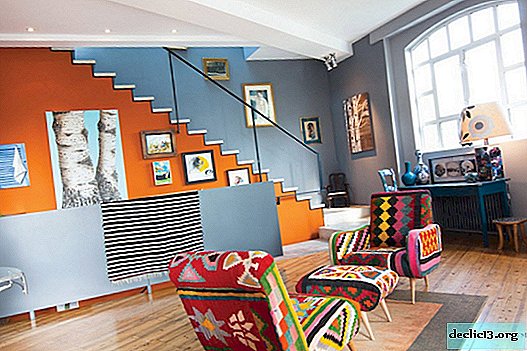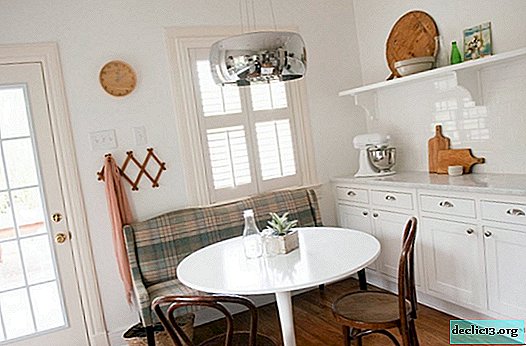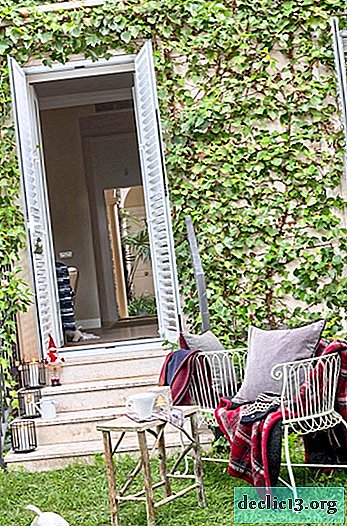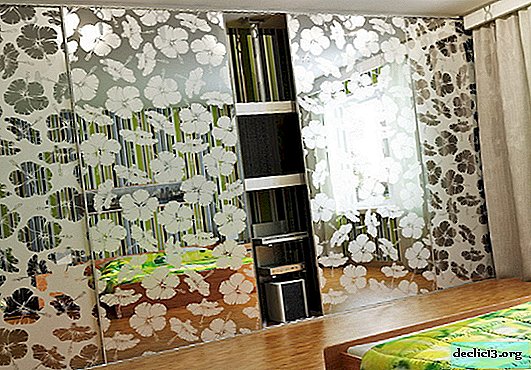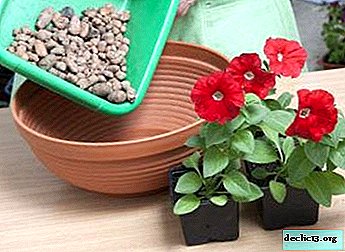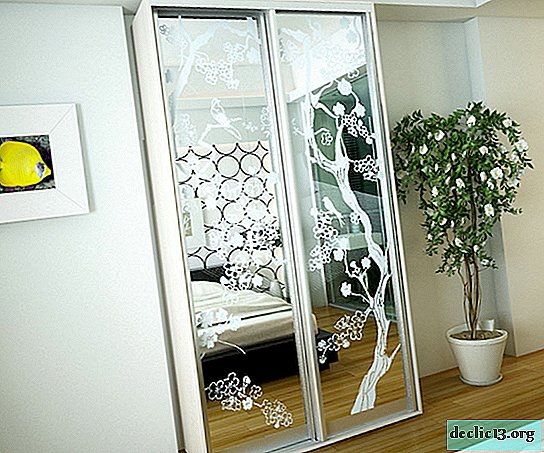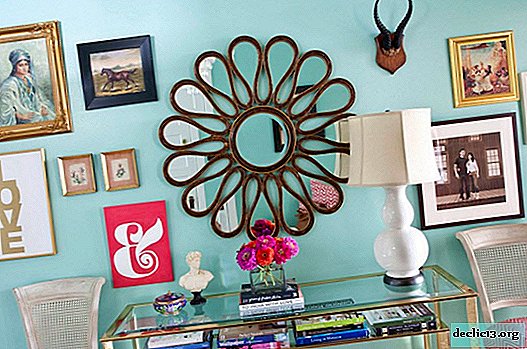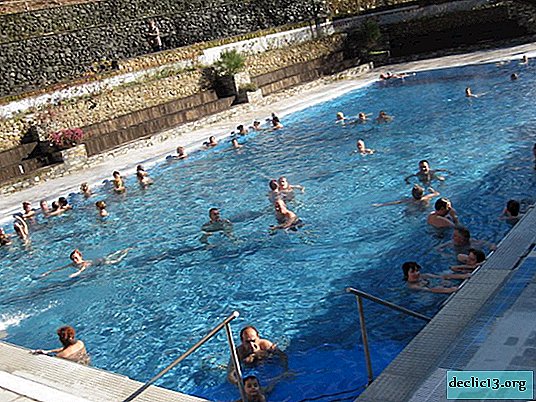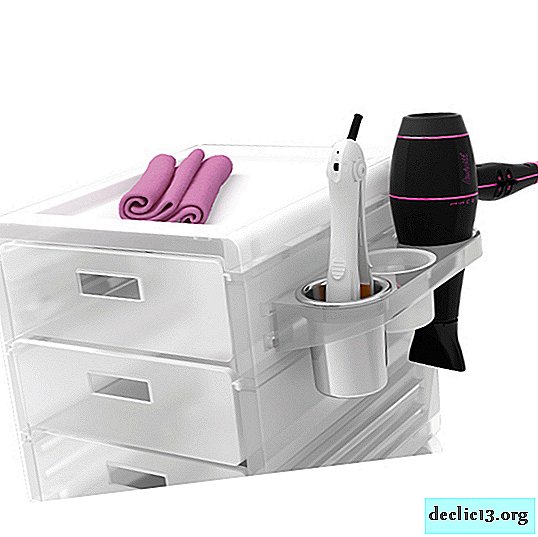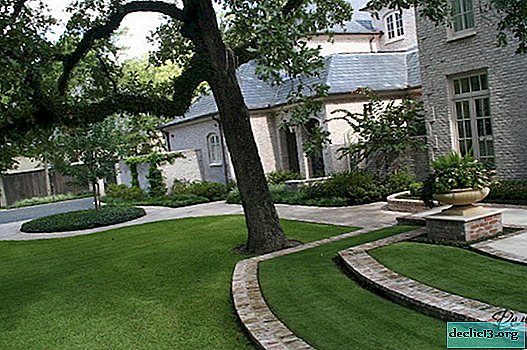How to crochet a chair cover, stages of work, suitable decor
A house is not only a "fortress", but also a place where you can gain strength and inspiration, relax, spend time with your family. Each housewife has her own ways to make housing warm and welcoming. One of them is do-it-yourself things. A plaid blanket, a cover or a cloak on a chair with a hook are simple products that even a novice craftswoman can create. They will give the furniture a special look and help a woman feel the joy of creativity.
Sizing
In order to take the right measurements, you should choose the style of the cape. It could be:
- a cover repeating all the outlines of furniture, covering or not covering the legs;
- product in the form of a cross, covering the back, seat, armrests;
- a rectangle cloak covering only the back and seat;
- seat and back covers tied separately;
- a chair cover that covers part of the back only in the place where the seated head is located.
The hardest thing is to take measurements for a one-piece case. You will need to measure all the details of the chair and repeat their shape. Start knitting from the bottom, measuring the girth of the place to which the cover will hang. They knit the fabric up to the seat level, then form the back. Last of all are taken for armrests, the interior of the furniture.
If the chair is at hand, it’s easier to adjust the size of the product directly on it. It is necessary to take into account the properties of the threads from which the cape is made. If they can shrink, then you need to add a few centimeters to all the parameters.
For a cloak-cross, you will need the dimensions of the back, seat and armrests. We must not forget that the product should hang down at all ends. How much exactly depends on the desire of the craftswoman. The hanging part along the back should be so long that the cloak does not slip off, the same applies to the armrests. If desired, you can fix it on buttons or Velcro to further fix the product.
The length of the overhang is equal to the thickness of the seat, about 10 cm, however, this parameter may vary depending on the idea of the knitter.
The cover only on the seat or only on the back is precisely measured, taking into account the shrinkage of the canvas. The product should tightly cover part of the furniture and be fixed on the back with an elastic band, Velcro, or other methods. Knitted cape on the headrest can be of any shape and size. Rather, it performs a decorative function and is made in the same technique with other products, for example, with a pillow lying on a furniture seat.
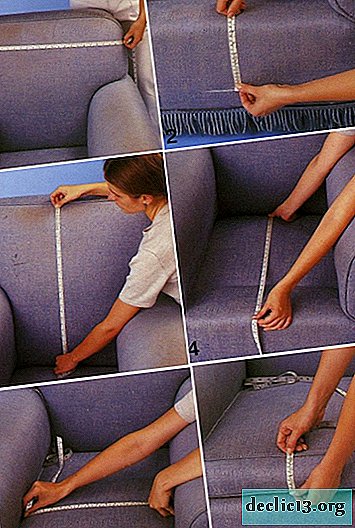 Proper sizing
Proper sizing Cover completely covering furniture
Cover completely covering furniture  Product in the form of a cross
Product in the form of a cross Rectangle Cape
Rectangle Cape Cape on the head of the chair
Cape on the head of the chair Materials and Tools
The result of knitting depends on the hook and thread. The yarn should match the purpose of the wrap. As a rule, the product is knitted from thick, dense threads to provide furniture protection against wear for a long service life. Their composition may be different: wool, cotton, synthetics or mix options. The web made of a polyester cord 3 mm thick possesses good qualities.
It is better to take threads that do not shrink, are easily erased, and dry quickly. As a rule, they include synthetics. To knit a warm blanket that makes your favorite furniture more comfortable, you can use wool or combine it with acrylic. Wraps for baby seats are best done from cotton, viscose. For decorative products, fine threads are suitable, the pattern of them will turn out delicate and delicate. Most often, the craftswomen use leftovers that are idle to knit such things. This option is particularly suitable for wraps of square motifs.
In the thinnest part, the hook should be half the size of the thread. Usually this recommendation is indicated on the packaging with yarn. When knitting, if there is no separate instruction, the thickness of the thread should match the thickness of the product.


Design and decor
You can decorate furniture with unusual knitted covers in various colors, shapes, patterns. Depending on the technique of the canvas are:
- continuous smooth;
- openwork with varying degrees of density;
- solid with volumetric pattern;
- with different motives.
When choosing, you need to take into account the fact that a solid cloth is suitable for a classic style, it better protects the furniture surface, but washing can be time-consuming. It will be even more difficult to clean a cloak with a volumetric pattern. For beginners skilled in the art of execution, openwork solid canvases or motifs are suitable. Such products knit quickly, do not require a lot of thread consumption, are easily washed and dry. Wraps with voluminous and openwork patterns are ideal for such interior styles as country, Scandinavian.
It is better to start knitting with a test sample measuring approximately 10 x 10 cm. This will allow you to understand what size of the canvas is needed, and to evaluate the effect of appearance.
By color, knitted furniture covers can be:
- monophonic;
- nuanced (using similar colors);
- contrasting.
As a decoration of the finished thing, various types of fringe, cord, pompons, buttons, knitted elements are used. Volumetric beads are best used from the back of the back.



Cape chair with square motifs
This is a great way to use leftover thread. Motives are:
- round;
- square;
- triangular;
- hexagonal and octagonal.
The most favorite among knitters is the square shape. Such motifs are simple in design, easy to stitch and help create a dense, continuous fabric without large holes. They are performed in any color, often combined. An undoubted plus of knitting with motives is that the craftswoman does not have to hold the entire fabric in her hands (which becomes harder and harder over time). To knit a wrap on a chair from squares, it is better to choose yarn of two or more colors. You can use the leftovers, but the threads for tying the fragments should be taken in one form and shade.
Knitting is carried out according to a simple scheme:
- Close the chain of 12 VPs into the ring.
- Tie 1 VP for lifting, then - 23 RLS in the ring. Close the row of SST.
- Make 3 VP for lifting, 2 SSN from the same loop, 1 VP, then 3 SSN in the third RLS of the second row, 5 VP, 3 SSN in the third RLS of the second row. Knit this sequence until the end of the row. Finish with an arch of 5 VP and close the row of SS.
- Run 3 VP for lifting, 2 SSN, 1 VP, 3 SSN in 3 third-row SSNs, 4 VP, 1 PRS in the middle of the arch of 5 third-row VPs, 4 VPs, 3 SSNs in 3 third-row SSNs. Knit such a sequence until the end of the row. Finish the arch of 4 VP, close the row of SS.
- Make 3 VP for lifting, 2 SSN, 5 VP, 3 SSN in 3 fourth-row CLS, 4 VP, 3 RLS so that the average coincides with RLS 4 rows, 4 VP, 3 CL in 3 CL 4 rows. Knit the sequence until the end of the row. Finish the arch of 4 VP, close the row of SS.
- Link 3 VP for lifting, 2 CH, 1 VP, 3 CCH in the arch, 3 VP, 3 CCH in the same arch, 1 VP, 3 CCH in 3 CCH of the fifth row, 5 VP, 1 RLS in the middle RLS of 5 rows, 5 VP, 3 CCHs in 3 CCHs of the fifth row. Knit the sequence until the end of the row. Finish with an arch of 5 VP, close the row of SS.
To calculate how many such squares need to be connected, the length and width of the conceived product are divided by the length of the side of the resulting motive. After a sufficient number of elements are made, they are steamed and covered with a damp cloth, through which steam is treated with an iron. All squares must be the same so that the product does not bubble.
Connected motifs are sewn together with a needle or crochet, which should be smaller in diameter than the main one. You can connect the squares in the process of creating the last row. Perimeter trim around the edge to visually combine the motifs into one composition. A beautiful crochet cloak is ready. She can decorate a chair, a chair, and a stool.
 Scheme
Scheme We collect a chain of air loops and close in a ring
We collect a chain of air loops and close in a ring Knit single crochet and close the row with connecting posts
Knit single crochet and close the row with connecting posts For the second row we knit a thread of a different color and knit according to the scheme
For the second row we knit a thread of a different color and knit according to the scheme In the next row, add a thread of a different color and knit with crochets
In the next row, add a thread of a different color and knit with crochets In the last row we add air loops and close the connecting loop
In the last row we add air loops and close the connecting loop Finished square motif
Finished square motif Similarly, according to the scheme, we produce many square motifs.
Similarly, according to the scheme, we produce many square motifs. Sew squares together
Sew squares together Cape on the chair with square motifs ready
Cape on the chair with square motifs readyOpenwork cover on a computer chair
A computer chair comfortable for work on wheels, as a rule, has a separately fixed back and seat. Covers for him will need two. You can take for example a motive called "grandmother's square" and connect a thing based on it.
The sequence of knitting openwork wrap-cover based on the "grandmother's square":
- 5 VP short in the ring SST.
- 3 VP for lifting, 2 St. Finish row 1 of the VP and close St. BN to form an arch.
- 3 VP for lifting, 2 St. CH in the arch. Tie in the next arch 3 St. CH, 2 VP, 3 St. CH Then 3 St. CH, 2 VP, 3 St. CH to the next arch and so on. Close row 1 VP and St. BN
- 3 VP for lifting, 2 St. CH in the arch, 3 St. CH in the interval between groups of 3 St. CH 3 rows, then connect 3 St. CH, 2 VP, 3 St. SN in the arch Continue the same way until the end of the series. Close row 1 VP, 1 St. B.N.
- Knit in this way to the desired size of the fabric.
It is necessary to knit two openwork square cloths according to the size of the back and seat, with an allowance on the back side of about 15 cm. In the holes formed along the edge of the motifs, use a pin to insert a linen gum of a suitable color. Place the knitted covers on the computer chair, tighten the elastic band. The main thing is that the product tightly covers the surface of the chair. Trim the gum, stitch its ends.
Steaming can be done directly on the chair so that the shape of the cape accurately follows the design of the back and seat. Such a cover is easily made even by a novice craftswoman. For more experienced, you can take the scheme of an openwork napkin or tablecloth.
 We collect air loops and close them in a ring
We collect air loops and close them in a ring We knit the crochets and form an arch
We knit the crochets and form an arch By analogy, we knit groups of loops to obtain the canvas of the desired size
By analogy, we knit groups of loops to obtain the canvas of the desired size Add a thread of a different color
Add a thread of a different color We knit two cloths: for the seat and back
We knit two cloths: for the seat and back  We put a pin on the rubber band
We put a pin on the rubber band Along the edge of the canvas we thread the elastic through the openwork holes
Along the edge of the canvas we thread the elastic through the openwork holes Openwork cover for a computer chair is ready
Openwork cover for a computer chair is readyDeciphering the scheme for beginners
In order to easily read patterns of patterns for wraps on chairs, you should know how various types of loops are indicated on them. They can be found on specialized resources for needlewomen. In graphics, the symbols shown in the table are usually used.
Designation | Decryption |
Point or small circle | Air loop |
Vertical strip | Single crochet |
Vertical bar with a cross bar | Double crochet |
Vertical strip with two (three) transverse lines | Column with two (three) yarn |
Small brace ends down | Connecting post |
Arch with a number in the middle | A chain of air loops (the number of loops corresponds to the figure under the arch) |
Circle with a number inside | Closed ring of air loops (the number of loops corresponds to a figure in a circle) |
Check mark | Two single crochet stitches from one loop |
A checkmark with one (two, three) transverse lines on each side | Two double crochet (two, three) crocheted from one loop |
Point or small circle | Connecting post |
Vertical strip | A chain of air loops (the number of loops corresponds to the figure under the arch) |
Vertical bar with a cross bar | Closed ring of air loops (the number of loops corresponds to a figure in a circle) |
Vertical strip with two (three) transverse lines | Two single crochet stitches from one loop |
Small brace ends down | Two double crochet (two, three) crocheted from one loop |
Arch with a number in the middle | Connecting post |
Circle with a number inside | A chain of air loops (the number of loops corresponds to the figure under the arch) |
Check mark | Closed ring of air loops (the number of loops corresponds to a figure in a circle) |
A checkmark with one (two, three) transverse lines on each side | Two single crochet stitches from one loop |
Point or small circle | Two double crochet (two, three) crocheted from one loop |
Regarding decryption of schemes, you should know the most important rules. If the patterns fit from the center to the edges, in straight and reverse rows, you need to read them from the bottom up. Odd rows should be decrypted from left to right, even rows - vice versa.
A self-made cloak will surely give the house a cosiness and a special atmosphere. It will protect furniture from pollution, animal claws, help update the interior. Knitting is not particularly difficult even for a woman who previously did not pick up a hook or knitting needles.
 Symbols for crochet patterns
Symbols for crochet patterns
